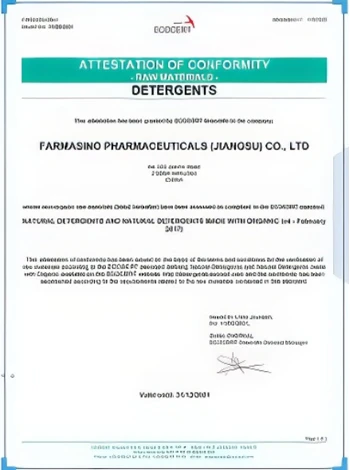



Exploring the Uses and Benefits of Potassium Nitrate in Agriculture and Industry
The Fascinating World of KNO3 A Closer Look at Saltpeter
Introduction
Potassium nitrate, commonly known as saltpeter (KNO3), is a chemical compound with a rich history and numerous applications. From ancient civilizations to modern industries, KNO3 has played a significant role in agriculture, food preservation, and even in the production of explosives. This article delves into the properties, uses, and historical significance of saltpeter, highlighting its importance in various sectors.
Chemical Properties of KNO3
Saltpeter is an ionic compound composed of potassium (K), nitrogen (N), and oxygen (O). It is characterized by its white crystalline appearance and is soluble in water, which allows it to be easily utilized in various processes. The chemical structure of KNO3 includes one potassium ion (K+), one nitrate ion (NO3−), where the nitrogen atom is bonded to three oxygen atoms in a trigonal planar arrangement.
KNO3 exhibits several interesting properties, including its ability to serve as an oxidizing agent. In combustion reactions, it can release oxygen, which helps to promote the burning of other materials. This property makes it valuable in applications ranging from fertilizers to pyrotechnics.
Historical Significance
The use of saltpeter dates back to ancient times. The earliest documented evidence of its application comes from India and China, where it was utilized in both medicine and as a food preservative. By the time of the Middle Ages, saltpeter was recognized for its role in gunpowder production. The combination of potassium nitrate, charcoal, and sulfur yielded a highly effective explosive that revolutionized warfare and mining operations.
As the Industrial Revolution progressed, the demand for KNO3 surged due to its application in explosives for construction and military use. However, its significance extends beyond just explosive properties; during the late 19th century, it was discovered that potassium nitrate could enhance plant growth by supplying essential nutrients.
Agricultural Applications
kno3 saltpeter

Today, KNO3 is widely recognized as a crucial component of fertilizers. As a source of both potassium and nitrogen, it plays a vital role in promoting healthy plant growth. Nitrogen is essential for the synthesis of amino acids, proteins, and chlorophyll, while potassium helps in regulating various physiological processes within plants.
The versatility of KNO3 in agriculture is notable. It can be applied directly to crops in solid form or dissolved in water for use in irrigation systems. Its use is particularly prominent in crops such as tomatoes, tobacco, and fruits, where the enhanced nutrient supply can lead to higher yields, improved quality, and better resistance to diseases.
Food Preservation and Safety
In addition to its agricultural benefits, KNO3 has historically been used in food preservation—a practice that continues in some contexts today. The compound acts as a preservative by inhibiting the growth of bacteria, particularly in cured meats. Saltpeter is often added to sausages and other meat products to help maintain color, enhance flavor, and prolong shelf life.
However, the use of KNO3 in food processing has prompted discussions about food safety. While it is generally recognized as safe when used appropriately, excessive consumption can lead to health concerns, including methemoglobinemia, a condition that affects the blood's ability to carry oxygen. As a result, regulatory bodies have set limits on its use in food products to ensure consumer safety.
Modern Uses in Industry
In modern industrial applications, KNO3 continues to be indispensable. Beyond agriculture and food preservation, it is used in the manufacture of glass and ceramics, as a component in various chemical syntheses, and in the production of fireworks. Its ability to release oxygen makes it an important ingredient in rocket propellants as well.
Moreover, advancements in technology have led to more sustainable methods of producing KNO3. Synthetic processes, such as the double decomposition method, allow for greater control over the quality and purity of the compound, making it suitable for a wide range of applications.
Conclusion
Potassium nitrate, or saltpeter, is more than just a simple chemical compound. Its rich history, coupled with its diverse applications in agriculture, food preservation, and industry, demonstrates its enduring significance. As we continue to explore new ways to utilize KNO3 responsibly, it is essential to balance its benefits with safety considerations. Whether enhancing crop yields or preserving food, saltpeter remains a remarkable compound with a plethora of uses that have shaped human civilization throughout history.
-
Why Sodium Persulfate Is Everywhere NowNewsJul.07,2025
-
Why Polyacrylamide Is in High DemandNewsJul.07,2025
-
Understanding Paint Chemicals and Their ApplicationsNewsJul.07,2025
-
Smart Use Of Mining ChemicalsNewsJul.07,2025
-
Practical Uses of Potassium MonopersulfateNewsJul.07,2025
-
Agrochemicals In Real FarmingNewsJul.07,2025
-
Sodium Chlorite Hot UsesNewsJul.01,2025










